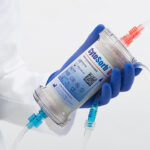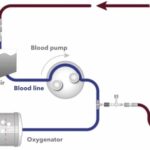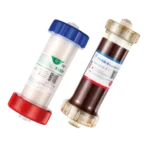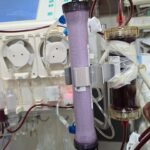Hemoperfusion
This method uses a surface adsorption system to purify blood, which removes hemoperfusion substances that contain toxins with a molecular weight of 10,000 to 60,000 daltons, such as infectious mediators, liver and kidney toxins with high molecular weight, from the blood using a surface adsorption system .
Hemoperfusion in mesocytosis
Hemoperfusion cartridges are used in patients with drug poisoning or poisoning with insecticides, herbicides, and agricultural toxins, as well as poisoning with skunk .
Note: Hemoperfusion in poisoning patients should be performed as an emergency as soon as the patient is admitted to the hospital .
Hemoperfusion in patients with sepsis or blood infection or severe infections such as pneumonia, peritonitis, and pancreatitis.
In cases where microorganisms enter the patient’s blood, the patient is said to have sepsis. When microorganisms enter the blood, substances are secreted in the blood that create an inflammatory storm. And it disrupts the function of vital organs such as the kidneys and lungs, and is then one of the common causes of death of patients in the ICU. Hemoperfusion in these patients helps to improve the treatment process of patients by absorbing these inflammatory mediators .
Note: Hemoperfusion in patients with COVID-19 and acute respiratory distress syndrome or ARDS in patients with COVID-19 or H1N1 influenza, severe respiratory distress syndrome, which prevents the effective exchange of oxygen between the lungs and blood due to inflammatory mediators in the lungs of patients and ultimately leads to a decrease in the patient’s blood oxygen level, which in severe cases leads to death. Hemoperfusion in these patients also helps to improve the treatment process of patients by absorbing these inflammatory mediators.
Concurrent hemoperfusion with CRRT is recommended for sepsis patients.
Hemoperfusion in liver failure and problems
In cases of liver failure, the liver is unable to metabolize certain toxins, including bilirubin and ammonia, each of which, by depositing in certain parts of the body , causes complications such as decreased level of consciousness, kidney failure, etc.
Hemoperfusion uses two cartridges, one to specifically absorb bilirubin and the other to absorb liver toxins, to support liver function for two purposes. In cases of acute liver failure, it can restore liver function, and in cases of chronic liver failure, it can give the patient the time needed for a liver transplant .
Hemoperfusion in severe burns and accidents
Following severe burns, accidents, and even poisoning with some toxins and drugs, the muscles of the body are destroyed. They release a high molecular weight substance called myoglobin, which, when deposited in the kidneys, leads to acute and sometimes permanent kidney failure. Hemoperfusion helps patients’ progress and prevents kidney failure by absorbing these substances .
Hemoperfusion in cases of hyperlipidemia ( TG ≥ 1000)
In cases where the patient’s blood lipids or triglycerides are above 1000 and do not respond to drug treatment, complications such as blood vessel blockage and heart attack, pancreatitis, fatty liver, etc. can occur .
Hemoperfusion can absorb fat molecules and prevent these complications from occurring .
Hemoperfusion in dialysis patients
Patients who undergo routine dialysis for chronic kidney failure may experience complications in the long term due to the accumulation of high-weight kidney toxins that cannot be removed by the dialysis filter, such as :
Treatment-resistant high blood pressure, osteoporosis followed by spontaneous fractures, skin complications such as itching, loss of appetite and weight loss, weakness and lethargy.
Sexual activity is disrupted .
To prevent or even treat these complications in patients, a hemoperfusion cartridge can be added to the dialysis filter twice a week .





